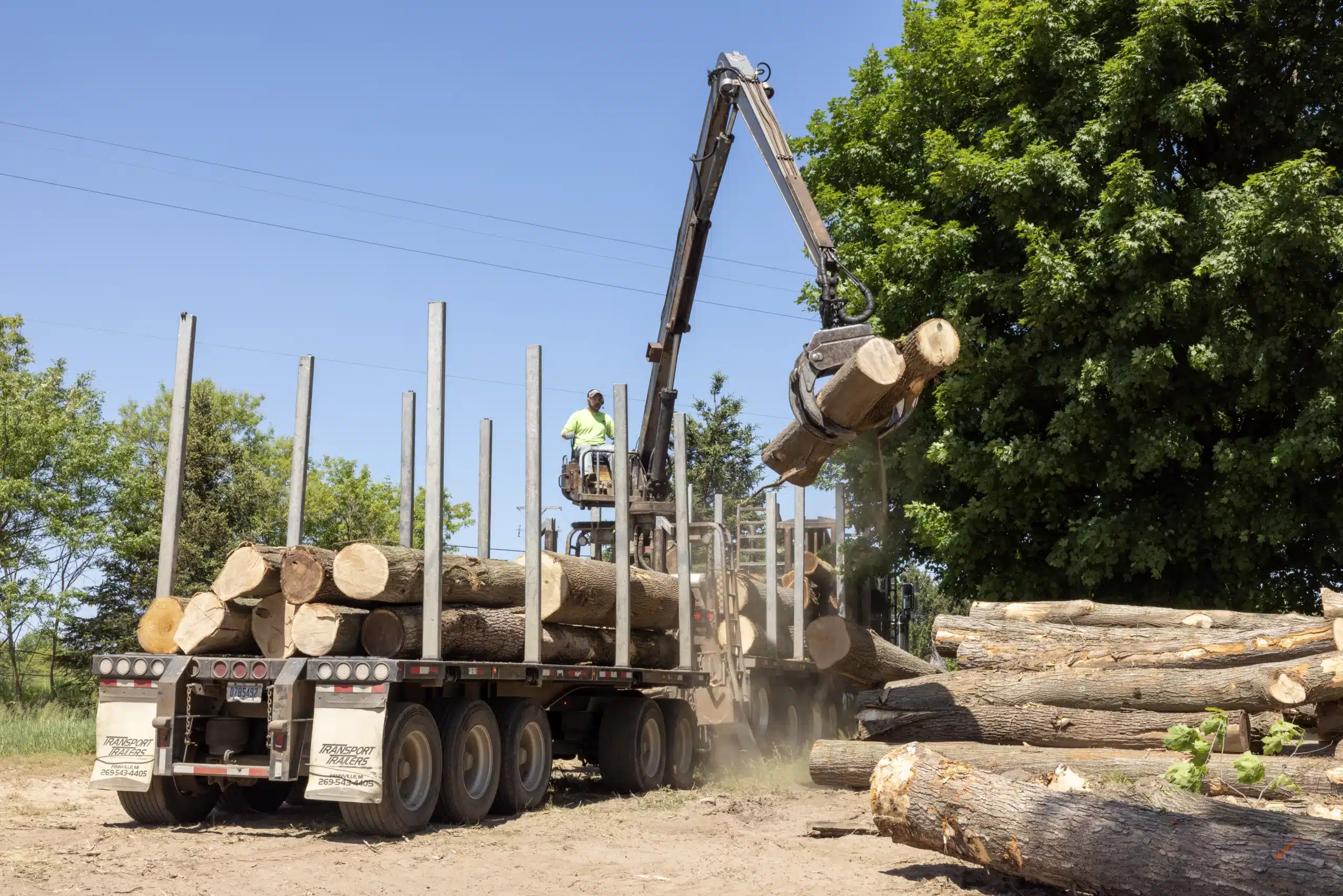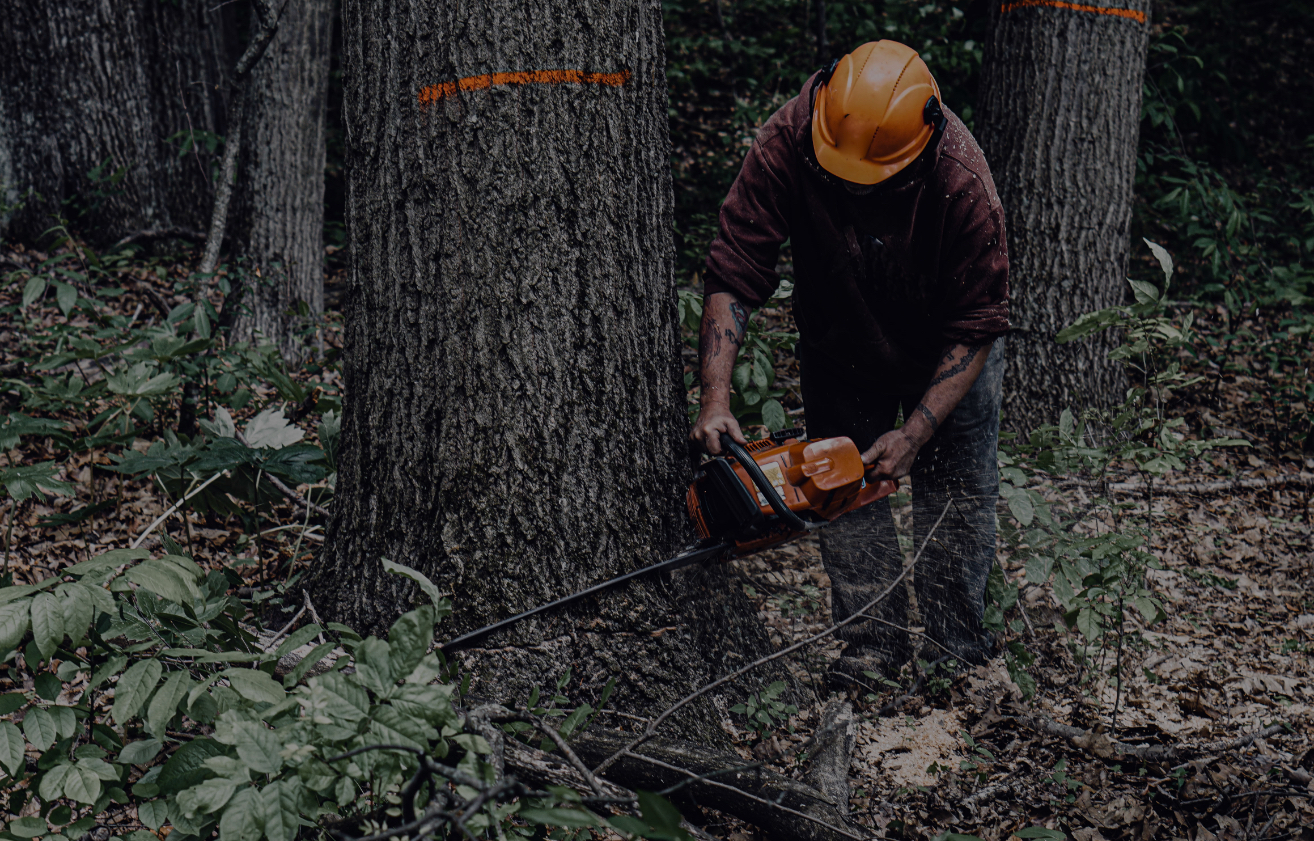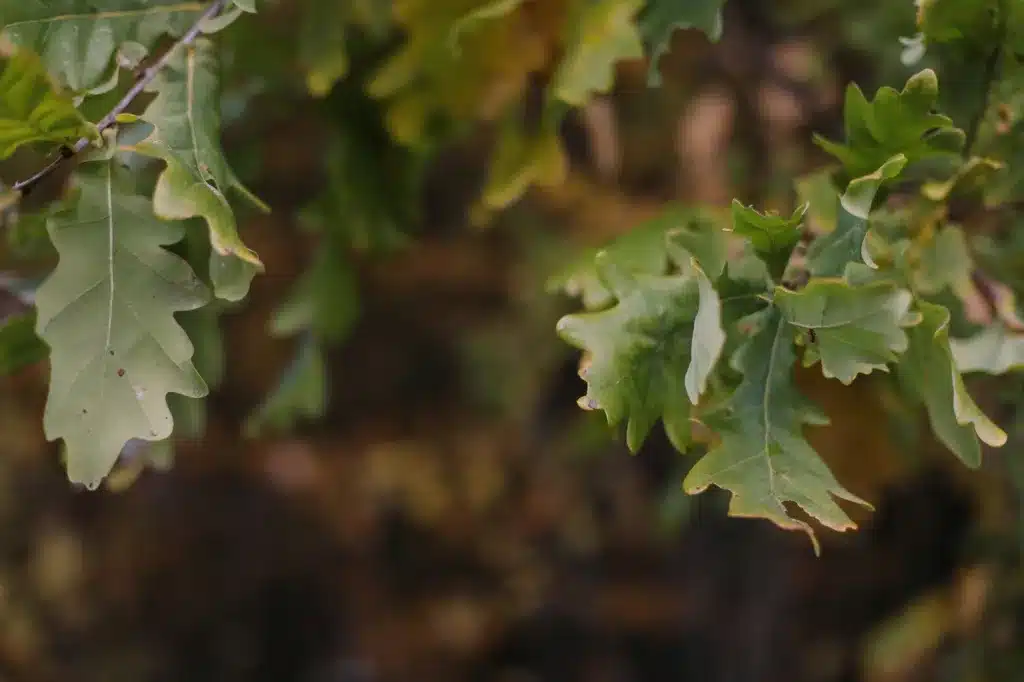If you own a large acreage in Michigan, chances are that many of the hardwoods on your properties are oak. With over 600 different species, 10 of which are native to Michigan, oaks are one of the most abundant hardwoods in the region.
Identifying Oak Tree Species
While there are many different oak species native to Michigan, the Northern Red Oak is one of the most dominant species in many forests throughout the state of Michigan! Each variety in the red and white oak group has its own distinct characteristics—and identifying which family of oaks your trees belong to can be as simple as studying the leaf pattern.
What Kind of Oak Trees Do I Have?
Some of Michigan’s most common oaks include:
- White Oak (Quercus alba): Leaves have rounded lobes with smooth margins and lack bristles or spines at the tips.
- Red Oak (Quercus rubra): Leaves feature pointed lobes with bristle-tipped margins, creating a jagged appearance.
- Northern Red Oak (Quercus rubra): Leaves typically have seven to eleven lobes, with deep sinuses between the lobes and a bristle tip at the end of each lobe.
- Black Oak (Quercus velutina): Leaves are deeply lobed with pointed tips, resembling a turkey foot, and have glossy dark green coloration.
- Bur Oak (Quercus macrocarpa): Leaves have large, rounded lobes with deep sinuses and bristle-tipped margins, often with a distinct cup-shaped base at the leaf attachment point.

Oaks in the white oak family have rounded leaves, while oaks in the red oak family are characterized by pointed tipped leaves.
Is Oak Considered A Hardwood?
Yes, oak is considered a hardwood. Hardwood is a term used to describe wood derived from deciduous trees, which are typically characterized by broad leaves, as opposed to softwood, which comes from coniferous trees with needle-like leaves. Oak is one of the most popular hardwoods because of its durability, strength, and attractive grain patterns. Oak wood is used in various applications such as furniture making, barrel making, flooring, cabinetry, and construction.
Learn more about the difference between hardwoods and softwoods.
The Value of Standing Oak Timber
How much are my oak trees worth? As with any species of hardwood, the value of the trees on your woodlot varies by the species, the quality of the wood, the size of the trees, the volume of the woodlot, the accessibility of the trees in question, market demand, and many other factors.
See what’s involved in calculating the value of your standing timber.
To get an assessment of the value of your standing oak timber in Michigan, please call us at (800) 860-WOOD. Due to the equipment needed and work required for logging operations, we harvest accessible hardwoods from woodlots with a high volume of standing timber, rather than individual trees from private yards.

![]()
Harvesting Oak Trees from Your Woodlot
Regular harvesting is key to the regeneration of the stand. Oak trees are fast-growing, requiring proper forest management periodically to keep your forests healthy and thriving. The most sustainable method of harvesting is selective harvesting, practiced by our timber procurement experts. This involves individually selecting and felling only the most mature trees that meet industry quality standards, while leaving the rest in the stand. This removal of older trees ensures that adequate room is left in the stand for younger, higher-oxygen producing trees to flourish.
Harvest the mature oak trees from your acreage with the help of Buskirk Lumber’s timber procurement team! By selling directly to a sawmill, you avoid profit-loss—and with our in-house trucking fleet, you don’t need to outsource any transportation.
As buyers of oak standing timber, we are able to offer referral incentives when multiple woodlots are harvested in the same vicinity. Let us know how we can help you harvest multiple jobs in one area and make a better profit per acre!

Sustainable Timber Harvesting Practices
Whatever your goals are for harvesting your timber, we provide landowners in Michigan with full forest management services for the best possible outcome for your woodlot. We begin with an evaluation and a select harvest schedule—ideally every 7-10 years.
We never suggest or recommend cutting down trees unnecessarily or cutting down trees that do not meet size requirements.
Harvesting too frequently leads to over-cutting and reduced growth rates—and delaying your harvesting makes the stand overcrowded, also reducing growth rates. To find the best frequency for your woodlot, consult with a professional in our Timber Procurement department who will assess it and determine a course of action based on your forest management objectives. The professionals at Buskirk Lumber can also help ensure that the harvesting process is done sustainably to protect the surrounding environment and wildlife.
Find a plan suited for your woodlot.

Buskirk Lumber: Buyers of Oak Standing Timber
At Buskirk Lumber, our passion for timber runs deep, and it’s a passion that has fueled our success for over a century. Founded in Freeport, Michigan and operating one of Michigan’s largest state-of-the-art sawmills, we are buyers of standing timber in Michigan’s Lower Peninsula, Northern Indiana, and Northern Ohio.
Our team of Timber Procurement professionals is the cornerstone of our operation, offering a comprehensive range of timber-related services. We’ll help you make sustainable harvesting decisions for your woodlot in:
- Allendale, MI
- Benton Harbor, MI
- Big Rapids, MI
- Bowling Green, OH
- Cadillac, MI
- Cleveland, OH
- Elkhart, IN
- Elk Rapids, MI
- Gaylord, MI
- Grand Haven, MI
- Grand Rapids, MI
- Holland, MI
- Jenison, MI
- Kalamazoo, MI
- Manistee, MI
- Michigan City, IN
- Middlebury, IN
- Mt. Pleasant, MI
- Muskegon, MI
- Petoskey, MI
- Ravenna, MI
- Saint Johns, MI
- Sandusky, OH
- Saugatuck, MI
- Silver Lake, MI
- Toledo, OH
- Traverse City, MI
- West Olive, MI
Contact Buskirk Lumber online or call our Timber Procurement department at (800) 860-WOOD.

